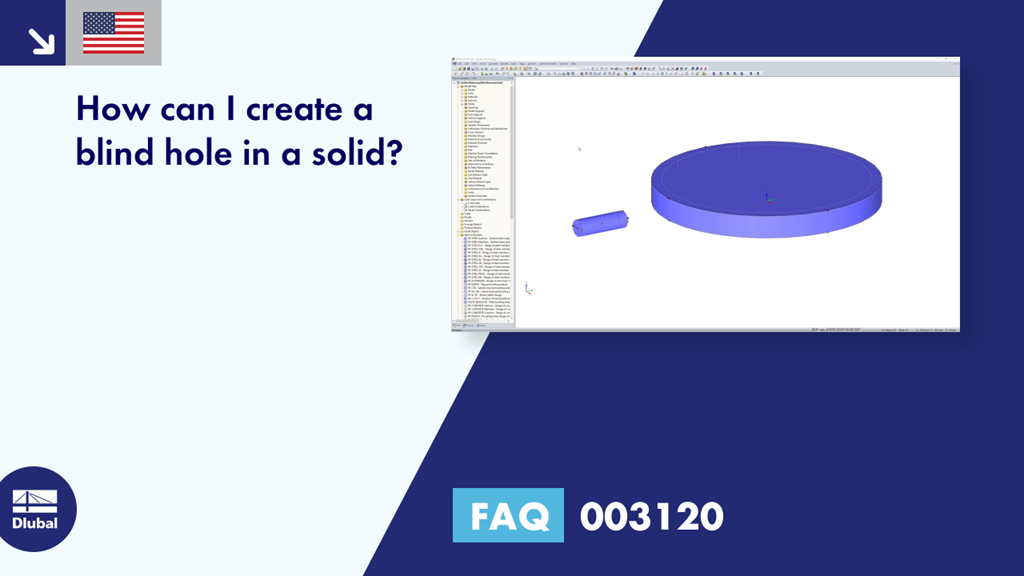Question:
How can I create a blind hole in a solid?
Answer:
In RFEM, it is possible to create a blind hole in a solid by means of a solid intersection.
The conversion requires two valid solids. One solid represents the structural component to be drilled, and the other solid represents a simplified drill. The simplified drill solid should consist of a cylindrical shank with an applied conical tip. The diameter of the shank is to be modeled with the blind hole diameter, and the length of the shank is greater than the blind hole depth.
For the intersection, place the drill solid with respect to the solid to be drilled on the location of the planned blind hole. It is important that the drill solid protrudes slightly above the base volume. Then, mark both solids and in the shortcut menu, select the "New Compound Solid" option. By specifying which Solid B (a drill solid) should be subtracted from which Solid A (a solid to be drilled) and activating the "Solid B as hole" option, the program deactivates both initial solids and creates a new compound solid. This solid represents the solid with a blind hole and is intelligently linked to the geometric specifications of the two initial solids.
